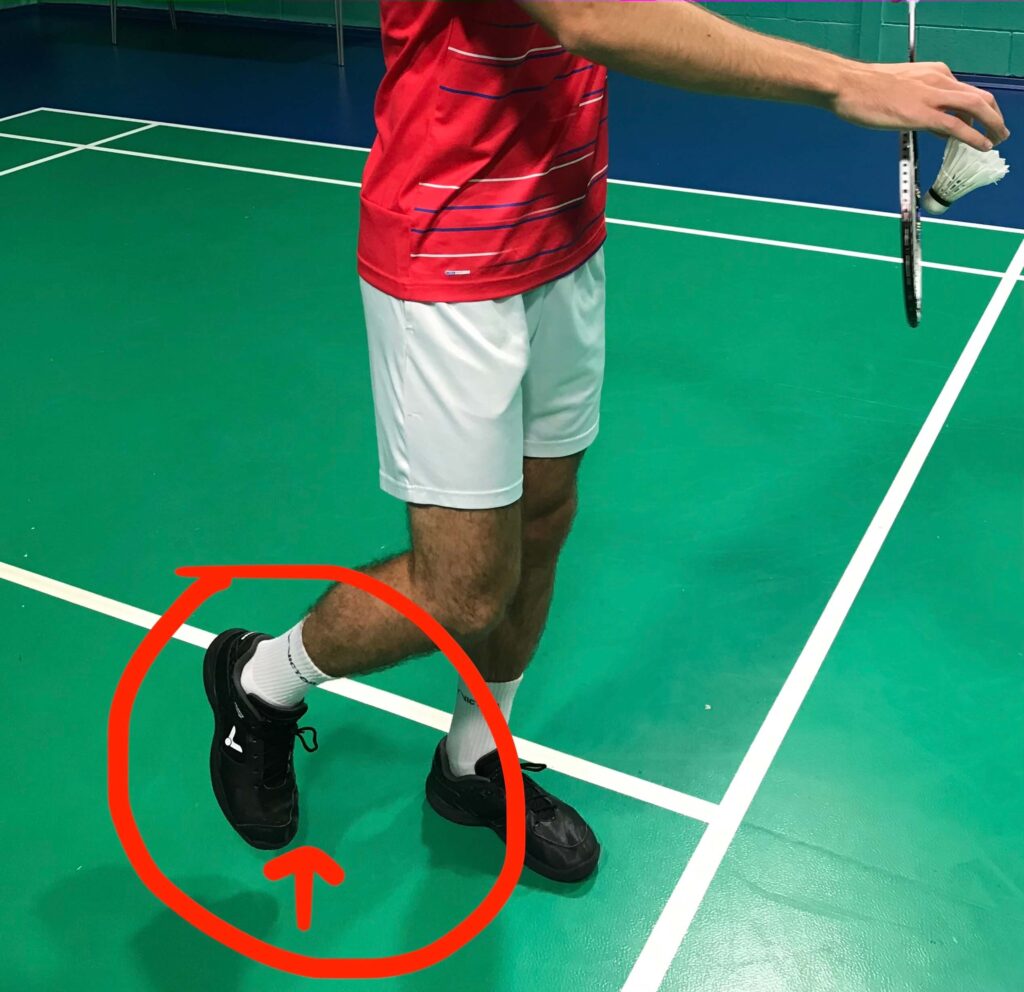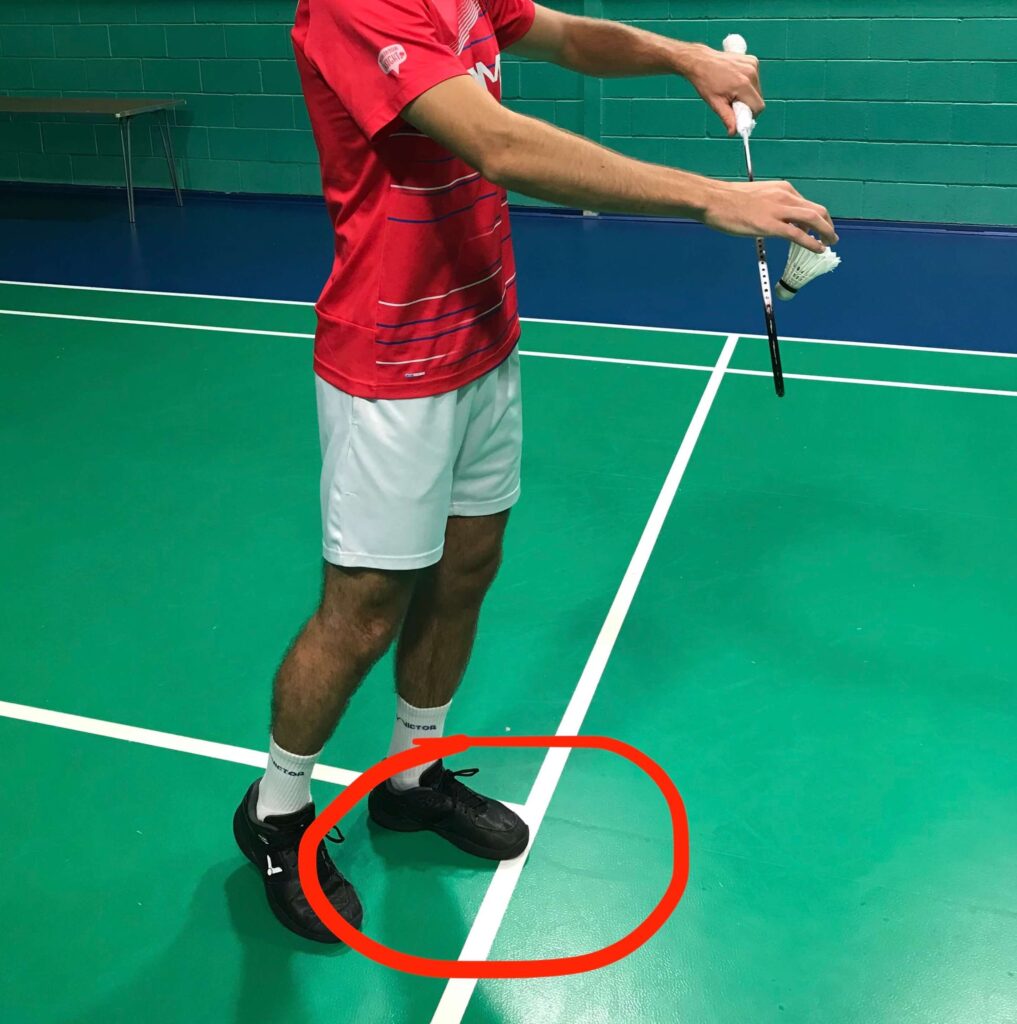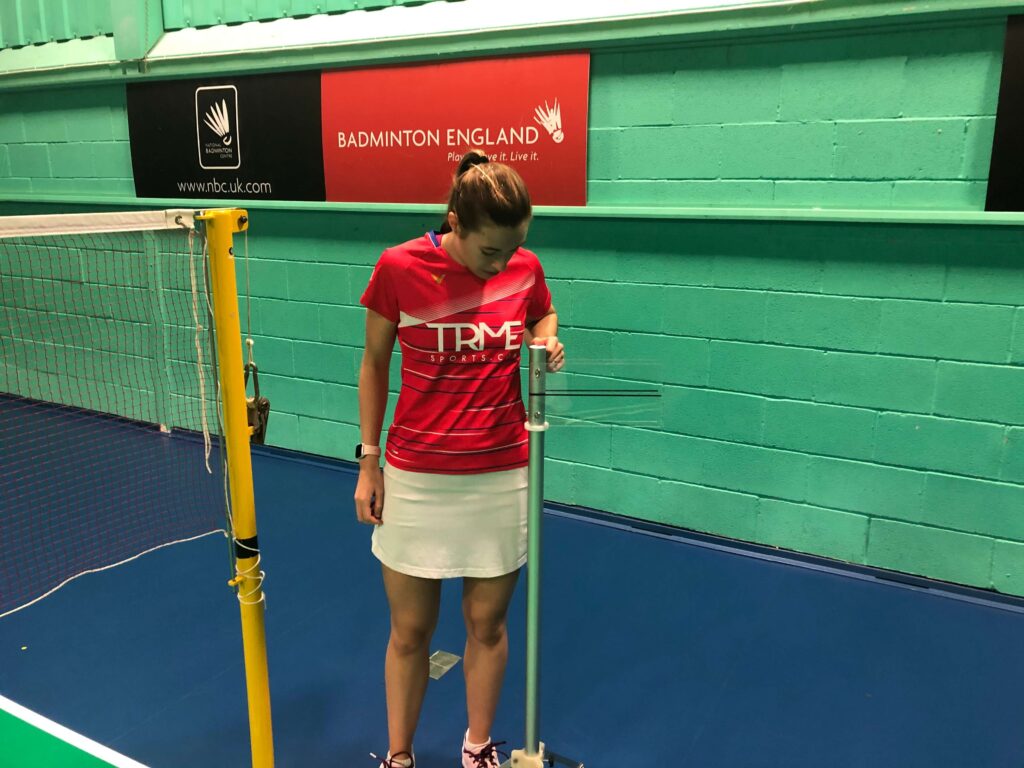Up-To-Date Badminton Serving Rules: With Pictures
There are 5 serving rules in badminton for both doubles and singles:
- Both feet must be in contact with the floor when striking the shuttle.
- Your feet must not be touching any of the court lines.
- You must strike the cork, not the feather.
- The whole shuttle must be struck below 1.15m.
- The serve must be delivered in a forward continuous motion.
We know there are a lot of arguments during matches as to whether your, or your opponents serve is a fault or not. Failing to comply with any one of these serving rules will be called a fault in a match where there is a service judge. However, the majority of people don’t play with a service judge so we will now look at each of these serving rules in depth.
1. Both Feet Must Be In Contact With The Floor When Striking The Shuttle
As you strike the shuttle, part of both feet must be in contact with the ground. You cannot move or lift either foot off the ground until the serve has been struck.
This rule is the same for both the server and receiver – the receiver must have both of their feet in contact with the ground until the shuttle has been struck.

2. Your Feet Must Not Be Touching Any Of The Court Lines
Your feet cannot be touching any of the lines on the court as you are serving or receiving. You can stand anywhere in your half (even in the tramlines!) as long as you are not touching any of the lines or are outside of the playing court.

3. You Must Strike The Cork, Not The Feathers
The BWF states that the base of the shuttle (the cork) must be struck first when serving.
This was added to the rules of the game as many players were gaining an advantage from hitting the feathers first and creating a huge amount of spin on the shuttle! It probably wasn’t great for the durability of the shuttles either…

4. The Whole Shuttle Must Be Struck Below 1.15m
“The whole of the shuttle shall be below 1.15 metres from the surface of the court at the instant of being hit by the server’s racket.” (BWF Laws of Badminton 9.1.6)
This is a new rule, brought in by the BWF in March 2018 aimed at “improving the application of the service laws at BWF tournaments” (BWF, 2017).

It is measured by a service judge looking through this plastic device, measuring up the two black lines.
The first official World Tour tournament to use this was the Yonex All England. The new rule is now used in all international tournaments.
Despite this, the new rule is not currently used in clubs and domestic tournaments and the old service rule is still in place. In summary, the old service rule is:
- “The whole shuttle shall be below the server’s waist at the instant of being hit by the server’s racket. The waist shall be considered to be an imaginary line round the body, level with the lowest part of the server’s bottom rib.
- The shaft and the racket head of the server’s racket at the instant of hitting the shuttle shall be pointing in a downward direction.” (BWF Alternative Service Laws 9.1.6).
We are unsure when and how the BWF will implement the new service rule into clubs and domestic tournaments around the world – unless they are going to provide everyone with one of the devices. Having said this, you will still need someone to look through it!
5. The Serve Must Be Delivered In A Forward Continuous Motion
Once you begin your backswing, the serve must be one continuous motion. At no point during the serving action can you pause.
Examples of illegal serves under this rule include:
- Stopping at the backswing and then moving forwards.
- Moving forwards and backwards multiple times before striking the shuttle.
Is There A Time Limit On The Serve In Badminton?
Finally, we know many of you will argue about a server taking too longer in their serving action. This is seen quite a lot in badminton – it can be a result of the server wanting to take time to deliver a quality serve, or sometimes just because they want to frustrate their opponents and make them wait! The duration of the serve is a hot topic in sports like tennis where they now have objective rules in place.
The BWF Laws of the Game state that “neither side shall cause undue delay to the delivery of the service once the server and receiver are ready” (BWF Laws of Badminton 9.1.1)
There is currently no time limit on this, however, we have seen players faulted for taking too long on their serve. We believe that given the significance of the serve in badminton, especially in doubles, there should be a time period in which the serving action has to take place within.
Our short video below explains these service rules and shows examples of faults in just 1 minute and 51 seconds:
Website links:
- BWF 2017 – https://bwfbadminton.com/news-single/2017/11/29/experimental-service-law-from-march-2018
- BWF Laws of the Game – https://corporate.bwfbadminton.com/statutes/#1513733461252-a16ae05d-1fc9
- BWF Alternative Service Laws – https://corporate.bwfbadminton.com/statutes/#1513733461252-a16ae05d-1fc9

